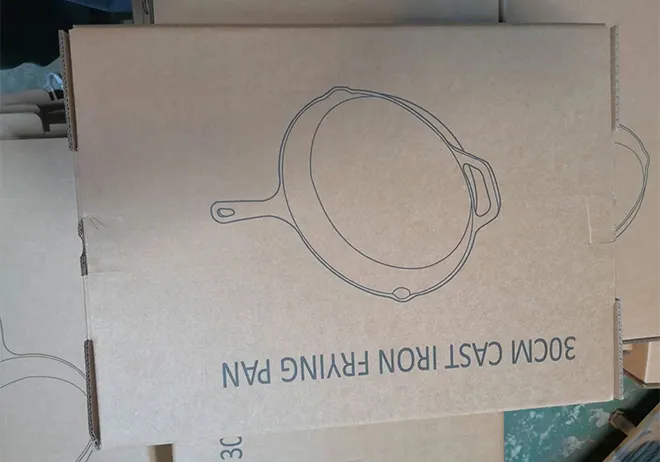
Best Practices for Safely Storing Your Cast Iron Cookware
Storing Cast Iron Pans Tips for Longevity and Performance
Cast iron pans are a popular choice among cooking enthusiasts for their heat retention, versatility, and the unique flavor they can impart to dishes. However, proper storage is crucial to maintaining their longevity and performance. Whether you have a cherished family heirloom or a new acquisition, this guide will help you ensure your cast iron pans remain in top condition.
Understanding Cast Iron Care
Before diving into storage tips, let’s quickly review the basics of cast iron care. Unlike non-stick cookware, cast iron requires a bit more attention. Regular seasoning—coating the surface with a thin layer of oil and heating it—creates a natural non-stick layer and protects the pan from moisture and rust.
Key Storage Tips
1. Clean After Use After cooking, it's essential to clean your cast iron pan properly. Avoid soaking it in water or using soap, as this can strip the seasoning. Instead, use a stiff brush or a scraper to remove food residue. For stubborn bits, consider simmering a little water in the pan to loosen them. After cleaning, dry your pan thoroughly to prevent rust.
2. Seasoning Before Storage Before storing your cast iron pan, it's a good idea to apply a light coat of cooking oil to the surface. This additional layer of oil reinforces the seasoning and provides extra protection against moisture.
3. Avoid Stacking If possible, avoid stacking your cast iron pans, as this can cause scratches and damage to the seasoning. Instead, store them individually. If you must stack them, consider placing a layer of parchment paper or a cotton cloth between the pans. This not only prevents scratching but also helps absorb any moisture.
storing cast iron pans

4. Choose the Right Location Store your cast iron pans in a cool, dry place. A kitchen cabinet or a dedicated shelf in your pantry works well. Avoid humid areas, such as under the sink or near the stove, where steam and moisture can cause rust.
5. Use a Pan Protector For those who have multiple cast iron pans, using a pan protector is an excellent way to protect the seasoning during storage. These fabric disks can be placed between pans to provide cushioning and prevent scratches.
6. Keep the Lid Off If you store your cast iron skillet with a lid, it might trap moisture inside, leading to rust. To allow for airflow, it’s best to keep the lid off or store it sideways to promote ventilation.
7. Regular Checks Occasionally, take the time to check on your stored pans. Look for signs of rust or deterioration. If you notice any rust, don’t panic; it can be removed. Scrub the affected area with a fine steel wool pad, then reseason the pan.
8. Consider Hanging For a stylish and functional storage option, consider hanging your cast iron pans on a pot rack. Not only does this keep your pans accessible, but it also allows for air circulation, reducing the chance of moisture accumulation. Plus, it can serve as a decorative display in your kitchen.
Conclusion
Storing cast iron pans properly is essential for maintaining their quality and ensuring they last for generations. By following these tips—cleaning, seasoning, avoiding stacking, choosing the right storage location, using protectors, and regularly checking your pans—you can enjoy the impressive cooking performance of your cast iron cookware for years to come. Proper care and storage not only enhance your cooking experience but also preserve the character and history that these versatile pans bring to your kitchen. So, give your cast iron the love it deserves, and it will reward you with delicious meals for a lifetime.
-
Authentic Traditional Chinese Wok for High-Performance CookingNewsAug.02,2025
-
Season Cast Iron Perfectly with GPT-4 Turbo TipsNewsAug.01,2025
-
High Quality Cast Iron Cookware - Baixiang County Zhongda MachineryNewsAug.01,2025
-
Premium Cast Iron Pan: Durable & Perfect HeatNewsAug.01,2025
-
High Quality Kitchen Durable Black Round Cast Iron Cookware Pancake Crepe Pan-Baixiang County Zhongda Machinery Manufacturing Co., Ltd.NewsAug.01,2025
-
Cast Iron Cookware - Baixiang County Zhongda Machinery | Nonstick, Heat ResistanceNewsAug.01,2025


